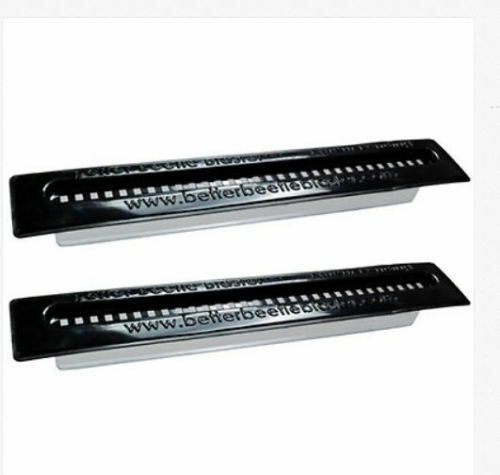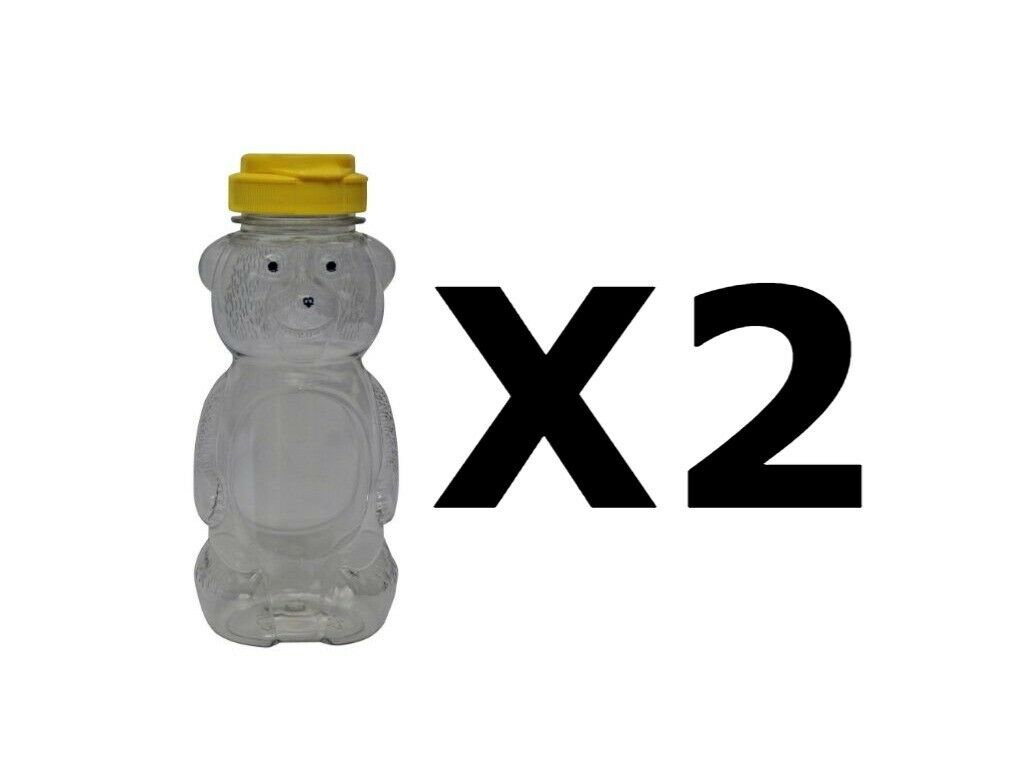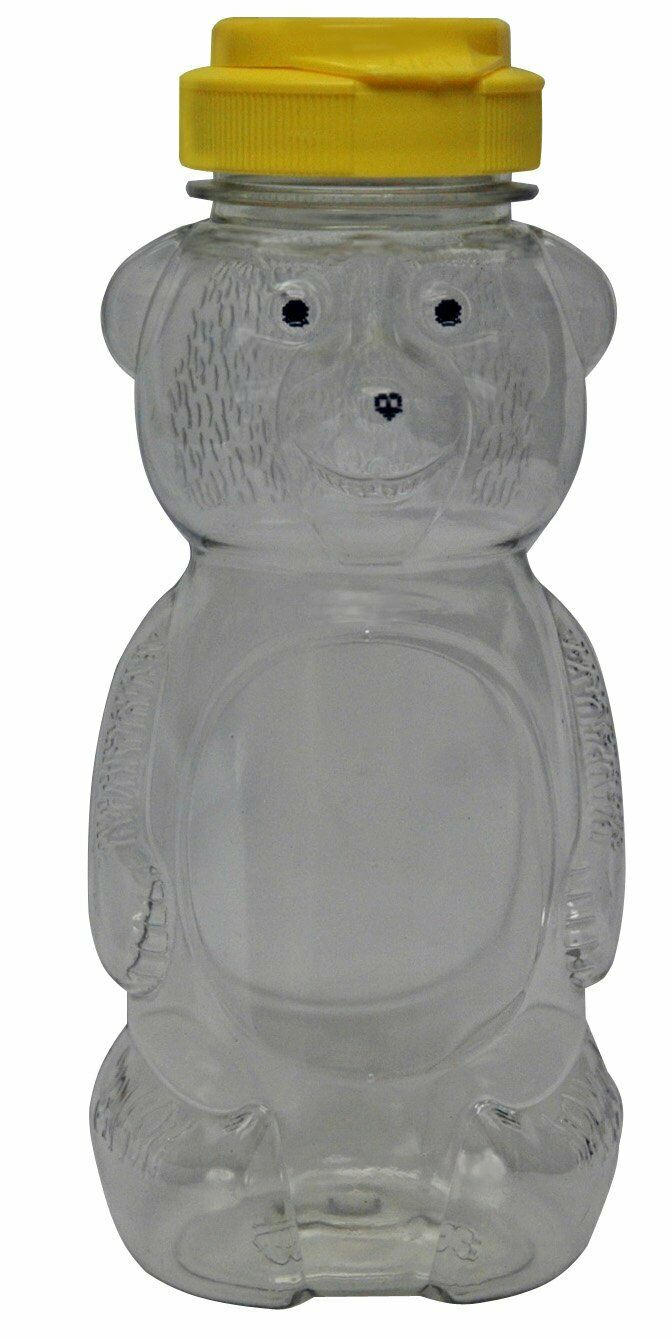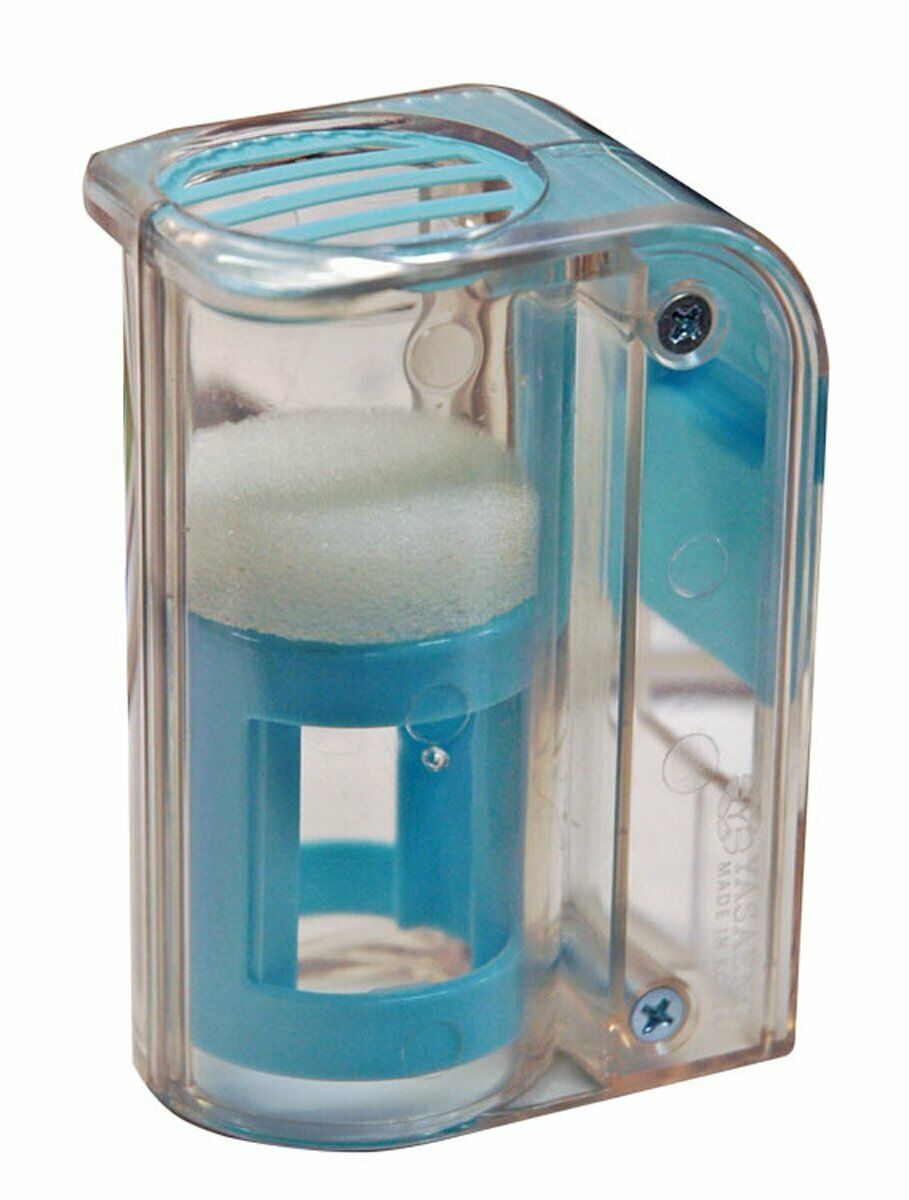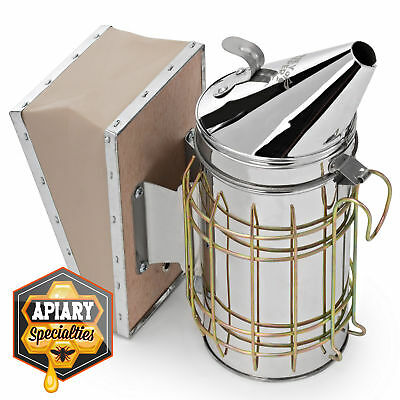-40%
FUMIDIL B 25 gram Alternative to Fumagilin B new FDA non prescription. exp. 22
$ 35.37
- Description
- Size Guide
Description
FUMIDIL B 25 gram Alternative to Fumagilin B new FDA non prescription. exp. Sept 2022I have in stock in Virginia
shipping from Virginia USA
Please place order via ebay and we will send to your link to make payment online and we will post on Ebay as paid.
DESCRIPTION: Fumidil-B 25 gram Bottle latest production is a water-soluble preparation containing Bicyclohexylammonium
Fumagillin, equivalent to 20 mg Fumagillin base per gram of powder.
Fumidil-B has a high specific action against Nosema apis., a microscopic, single-celled parasite which
causes Nosema disease in honey bees. It acts on the multiplying, disease producing parasite in the gut
and is not effective against the spores. To eradicate the continuing supply of parasites, Fumidil-B must
be provided over a period of several weeks.
DIRECTIONS: Fumidil-B should be dissolved in water and then added to syrup. For best results, heat
the required amount of water to 95-122°F, then remove the heat source and add the Fumidil-B and the
sugar in that order.
Do not add Fumidil-B to syrup over 86°F. Feed the medicated syrup within 24 hours. To prepare this
concentration of medicated syrup, use the following chart.
Water +Sugar =Syrup +Fumidil-B
48.5 gallons +800.7 lbs = 110 gallons 500 gram bottle
0.44 gallons +7.3 lbs = 1 gallon 4.5 grams
Fall Feeding Medicated Syrup
2 gallons for each 2-chamber colony (approximately 30,000 bees) 1 gallon for each 1-chamber colony
(approximately 12,000 bees)
¾ gallon for each 5-frame colony (approximately 12,000 bees)
Feed additional unmedicated syrup to desired colony weight for wintering.
Spring Feeding Medicated Syrup
1 gallon for each 2-chamber colony (approximately 30,000 bees)
½ gallon for each 1-chamber colony (approximately 12,000 bees)
½ gallon for each 5-frame colony (approximately 12,000 bees) 1 gallon for each package colony
Feed additional unmedicated syrup to provide nourishment until nectar is available. Each package
colony is best fed Fumidil-B immediately after installation.
Colonies used for package production should be fed medicated syrup as a principle food source for
one month prior to shaking for market.
Heavily infested colonies that will no longer take in syrup may be sprayed repletely, directly onto the
bees, frame by frame with 1:1 sugar syrup (one-part sugar to one-part water).
WARNING:
Medicated syrup must not be fed immediately before or during the honey flow.
STORAGE INSTRUCTIONS:
Store below 77°F, protected from sunlight. Do not expose medicated syrup to sunlight
I study and research Bees since 1981
Dosage for the Fumagilin B and Fumidil is the same
Fumagilin-B
Mixing and Feeding Instructions in U.S. Measurements
Preparation of Medicated Syrup:
Fall Feeding Medicated Syrup
• 2 gallons for each 2-chamber colony (approx. 30,000 bees)
• 1 gallon for each 1-chamber colony (approx. 18,000 bees)
• ¾ gallon for each 5-frame colony (approx. 8,000 bees)
Feed additional medicated syrup to desired colony weight for wintering.
Spring Feeding Medicated Syrup
• 1 gallon for each 2-chamber colony (approx. 20,000 bees)
• ½ gallon for each 1-chamber colony (approx. 12,000 bees)
• ½ gallon for each 5-frame colony (approx. 8,000 bees)
• 1 gallon for each package colony
Feed additional un-medicated syrup to provide nourishment until nectar is
available.
Additional Measurements
• ½ teaspoon = 1.5 g Fumagilin-B (31.5 mg activity)
• 1 teaspoon = 3.0 g Fumagilin-B (63 mg activity)
• ½ tablespoon = 4.8 g Fumagilin-B (100 mg activity)
• 1 tablespoon = 9.5 g Fumagilin-B (200 mg activity)
• 2/3 cup = 50 g Fumagilin-B (1.05 g activity)
Water +Sugar =Syrup +Fumagilin-B
44 gallons +727 lbs. =100 gallons +16 ounces (454g bottle)
9 1/3 gallons +152 lbs. =21 gallons +3.4 ounces (96g bottle)
2 ¼ gallons +37 lbs. =5.2 gallons +0.85 ounces (24g bottle)
½ gallon +8 lbs. =1 gallon +0.18 ounces (5g=1 rounded teaspoon)
The only known registered treatment for nosema. Feed in sugar syrup during the spring and fall to keep your spore counts low.
• No residue in honey when used as directed.
• Cost effective. Reduces expensive colony replacement and results in more productive colonies.
Lech Bajan to BANK WIRE My account: PL 07 1930 1695 3500 0576 6493 0001
bank in Poland Kod BIC( SWIFT) Banku BPS – POLUPLPR
Or US clients can pay to our Pentagon US Bank
Bank BPS, LUBLIN
POLAND
Alex Lech Bajan
Principal
RAQport
Inc.
USA
I study and research Bees since 1981. last picture is me in 1985 Bee Academy 5 years study
Please commit to purchase on Ebay and we will send you link to make Payment from our Intuit Merchant account and we will post on ebay as paid. and we will leave
positive feedback. na zamowienia od rodakow Pszczelarzy z Polski wysje number naszego konta w Polsce. W Technikum Psczelarskim Pszczela w latach 1981-86 zaprzujaxznilem sie z Dr. wawrynem I wojtackim.
Klania sie absolwent Technikum Pszczekarskiego rok 1986 Pszczela Wola. Zaprzyjaznilem sie z ks. Ostach i spedzilem u niego wigilie 1982
Fumidil „B”
Do zapobiegania chorobie Nosema u pszczół miodnych.
Wyprodukowano przez: - Abbott
Dystrybucja i sprzedaż: - CEVA Ltd., 3 Rhodes Way, Watford, Herts. (do kogo należy kierować wszystkie zapytania).
Dostępne w handlu urządzeniami w Wielkiej Brytanii.
Nr ref. Danych technicznych: - PL 3974/4013, 09250/46/3, 09-250 / 79
Data wydania danych: - Nieznana (prawdopodobnie 1979 r.).
Nie popieram ani nie potępiam tego produktu. Informacje tutaj opublikowane są publicznie rejestrowane. Informacje są umieszczone tutaj dla edukacji tych, którzy chcą je przeczytać.
ZANIM uzyskasz lub wykorzystasz dany materiał, upewnij się, że jest to legalne w Twojej lokalizacji, ponieważ produkt może, ale nie musi, zostać zatwierdzony w Twoim kraju lub kraju geograficznym.
Fumidil B to nazwa Abbott dla bicykloheksyloamoniowej fumagiliny: - rozpuszczalnej soli antybiotyku wytwarzanej przez fermentację Aspergillus fumigatus. Stwierdzono, że ten antybiotyk ma specyficzną aktywność wobec pierwotniaka Nosema Apis, przyczyny choroby Nosema u pszczół miodnych. [1] Antybiotyk zapobiega atakom stadiów rozrodczych pasożytów na komórki nabłonkowe żołądka i pszczoły.
Przedstawiony po prawej pakiet 3 kolonii zawiera tubę polietylenową z pokrywą „dźwigni wyłączającej”. Drobny, ale ziarnisty proszek zawarty w wannie ma kremowe zabarwienie.
Pakiet Fumidil „B”
Fumidil B nie ma wpływu na zarodniki ani na fazę spoczynku Nosema Apis i dlatego należy go udostępnić w pokarmie pszczół przez trzy do czterech tygodni, aby uwolnić populację kolonii od zakażenia. Aby zapobiec ponownemu zakażeniu zarodników noszonych przez grzebienie, te ostatnie należy zastąpić czystymi grzebieniami wczesną wiosną, a następnie (stare grzebienie) należy odkazić przez wystawienie na działanie pary formaliny (lub lodowatego kwasu octowego, jeśli zawierają zapasy miodu) lub pyłek) przed ich ponownym użyciem. [2]
Fumidil B jest skuteczny, gdy jest podawany w syropie jesienią. [3] Najlepiej stosować go wówczas jako wstęp do przeniesienia pszczół do czyszczenia grzebieni wiosną lub jako środek ostrożności jesienią po przeniesieniu. [4]
Bibliografia
[1] Katznelson, H., i Jamieson, C.A. (1952) Control of Nosema Disease in Honey Bees with Fumagillin, Science, 115: 70.
[2] Bailey, L. (1954), The Control of Nosema Disease, Bee World 35: 111.
[3] Bailey, L. (1953), The Treatment of Nosema with Fumagillin, Bee World 34: 136.
[4] Bailey, L. (1963), Infectious Diseases of the Honey Bee, str. 110 (Land Books, Londyn).
Instrukcje stosowania
Na podstawie wyników uzyskanych w Rothamstead Experimental Station.
Każda leczona kolonia powinna otrzymać około 166 mg aktywności fumagiliny (jedna trzecia zawartości fiolki 0,5 g), podawane w syropie zawierającym 14 funtów cukru w 7 litrach wody.
Precyzyjny pomiar nie jest niezbędny, ponieważ „jedna trzecia” fiolki 0,5 g (ok. Łyżki deserowej) jest więcej niż wystarczająca do leczenia przeciętnej kolonii.
Łatwiej jest rozpuszczać cukier w ciepłej wodzie, jednak ważne jest, aby Fumidil B NIE był poddawany działaniu temperatury wyższej niż 49 ° C (120 ° F) na jakimkolwiek etapie operacji mieszania.
1. Podgrzej 7 litrów wody na kolonię do 38 ° C (100 ° F) NIE PRZEKRACZAJ 49 ° C (120 ° F).
2. Przydzielić jedną trzecią fiolki 0,5 g na każdą kolonię, którą należy poddać działaniu i rozpuścić w podgrzanej wodzie.
3. Gdy woda jest jeszcze gorąca, dodaj 14 funtów cukru na kolonię i mieszaj, aby uzyskać klarowny syrop. (Zwróć uwagę na końcowy tom, aby ułatwić krok 4).
4. Podaj ten syrop pszczołom w zwykły sposób.
UWAGA
Duże opakowanie zawiera 9,5 g aktywności fumagiliny, co sprawia, że syrop wystarcza do leczenia 54 kolonii. Zawartość tego opakowania należy rozpuścić w 47,5 galonów wody, do których 6,75 cwt. cukru należy dodać zgodnie z powyższym opisem.
Fumidil «B»
Pour la prévention de la maladie de Nosema chez les abeilles.
Fabriqué par: - Abbott
Distribué et commercialisé par: - CEVA Ltd., 3 Rhodes Way, Watford, Herts. (à qui toutes les demandes doivent être adressées.)
Disponible dans le commerce d'électroménagers au Royaume-Uni.
Fiche technique Ref's: - PL 3974/4013, 09250/46/3, 09-250 / 79
Date de publication des données: - Inconnue (supposée être 1979).
Je n'approuve ni ne condamne ce produit. Les informations telles que publiées ici sont du domaine public. L'information est placée ici pour l'éducation de ceux qui souhaitent la lire.
AVANT d'obtenir ou d'utiliser le matériel concerné, veuillez vérifier la légalité de le faire dans votre région, car le produit peut ou non être approuvé dans votre État ou pays géographique.
Fumidil B est le nom d'Abbott pour la fumagilline bicyclohexylammonium: - un sel soluble d'un antibiotique produit par fermentation d'Aspergillus fumigatus. Cet antibiotique s'est révélé posséder une activité spécifique contre le protozoaire Nosema Apis, la cause de la maladie de Nosema chez les abeilles [1]. L'antibiotique empêche les stades de reproduction des parasites d'attaquer les cellules épithéliales de l'estomac digestif de l'abeille.
Le pack de 3 colonies illustré à droite contient une baignoire en polyéthylène avec un couvercle à levier. La poudre fine mais granuleuse contenue dans la cuve a une coloration crème.
Pack Fumidil 'B'
Le fumidil B n'a aucun effet sur les spores ou le stade de repos de Nosema Apis et doit donc être mis à disposition dans la nourriture des abeilles pendant trois à quatre semaines pour libérer la population de colonie infectieuse. Pour éviter la réinfection par les spores portées par les rayons, ces derniers doivent être remplacés par des rayons propres au début du printemps, puis (les anciens rayons) doivent être décontaminés par exposition à la vapeur de formol commercial (ou à l'acide acétique glacial s'ils contiennent des réserves de miel). ou pollen) avant de les réutiliser. [2]
Le fumidil B est efficace lorsqu'il est alimenté en sirop à l'automne. [3] Il est préférable de l'utiliser ensuite comme préalable au transfert des abeilles pour nettoyer les rayons au printemps ou comme mesure de précaution à l'automne suivant le transfert. [4]
Les références
[1] Katznelson, H., et Jamieson, C.A. (1952) Control of Nosema Disease in Honey Bees with Fumagillin, Science, 115: 70.
[2] Bailey, L. (1954), Le contrôle de la maladie de Nosema, Bee World 35: 111.
[3] Bailey, L. (1953), The Treatment of Nosema with Fumagillin, Bee World 34: 136.
[4] Bailey, L. (1963), Infectious Diseases of the Honey Bee, p.110 (Land Books, Londres).
Mode d'emploi
D'après les résultats obtenus à la station expérimentale de Rothamstead.
Chaque colonie à traiter devrait recevoir environ 166 mg d'activité de fumagilline (un tiers du contenu d'un flacon de 0,5 g), administrée dans un sirop contenant 14 lb de sucre dans 7 pintes d'eau.
Une mesure précise n'est pas essentielle car un "tiers approximatif" du flacon de 0,5 g (environ une cuillerée du désert) est plus que suffisant pour le traitement de la colonie moyenne.
Il est plus facile de dissoudre le sucre dans de l'eau tiède, mais il est important que le fumidil B ne soit PAS soumis à une température supérieure à 49 ° C (120 ° F) à n'importe quelle étape de l'opération de mélange.
1. Faites chauffer 7 litres d'eau par colonie à 38 degrés C (100 degrés F). N'EXCÉDEZ PAS 49 degrés C (120 degrés F).
2. Répartir un tiers du flacon de 0,5 g pour chaque colonie à traiter et dissoudre dans l'eau chauffée.
3. Pendant que l'eau est encore chaude, ajoutez 14 livres de sucre par colonie et remuez pour faire un sirop clair. (Prenez note du volume final pour faciliter l'étape 4.)
4. Donnez ce sirop aux abeilles de la manière habituelle.
REMARQUE
Le grand emballage contient 9,5 g d’activité de fumagilline, ce qui donne suffisamment de sirop pour traiter 54 colonies. Le contenu de ce pack doit être dissous dans 47,5 gallons d'eau dans lesquels 6,75 cwt. de sucre doit être ajouté comme décrit ci-dessus.
This colony is dead, or at least we are calling it that. (We could take all the bees that are left and put them in a five frame nuc to see if the queen recovers and still possibly use her later on.) After looking at all the signs it appears the colony died of Nosema Apis. There is bee poop everywhere. Nosema Apis does cause a type of bee dysentery. This disease affects colonies usually in late winter. It is brought on by stress that a colony is under. Mites could possibly be a contributing factor that helped cause stress. But the key apparent symptom of bee poop everywhere, points to Nosema. We used to treat our bees with Fumigillan aka known as Fumidil B. It was an antibiotic for the treatment of Nosema
I study and research Bees and all animals since 1981. I supply farmers all over the world. They Know me.
This is NOT RX item free to sale on Ebay and other markets.
Shipping from from USA zip 22-180 Vienna Virginia.
We will send you link to make payment to our Merchant account and after we will post on Ebay as paid.
This is Over-the-counter is also known as OTC or nonprescription bio supplement, natural vitamins and minerals.
The only known registered treatment for nosema. Feed in sugar syrup during the spring and fall to keep your spore counts low.
No residue in honey when used as directed.
Cost effective. Reduces expensive colony replacement and results in more productive colonies.
Add 1 - 500 gram bottle to 1 gallon of water to dissolve. Makes 110 gallons of treatment when added to 110 gallons of syrup.
All these terms refer to medicine that you can buy without a prescription.
They are safe and effective when you follow the directions on the label and as directed.
This is not prescription item from a doctor. Not RX item but widely sold in any local farm and pet store in world and in the USA. T
his is Not listed by Food and Drug Administration (FDA) Green Books as not restricted item.













